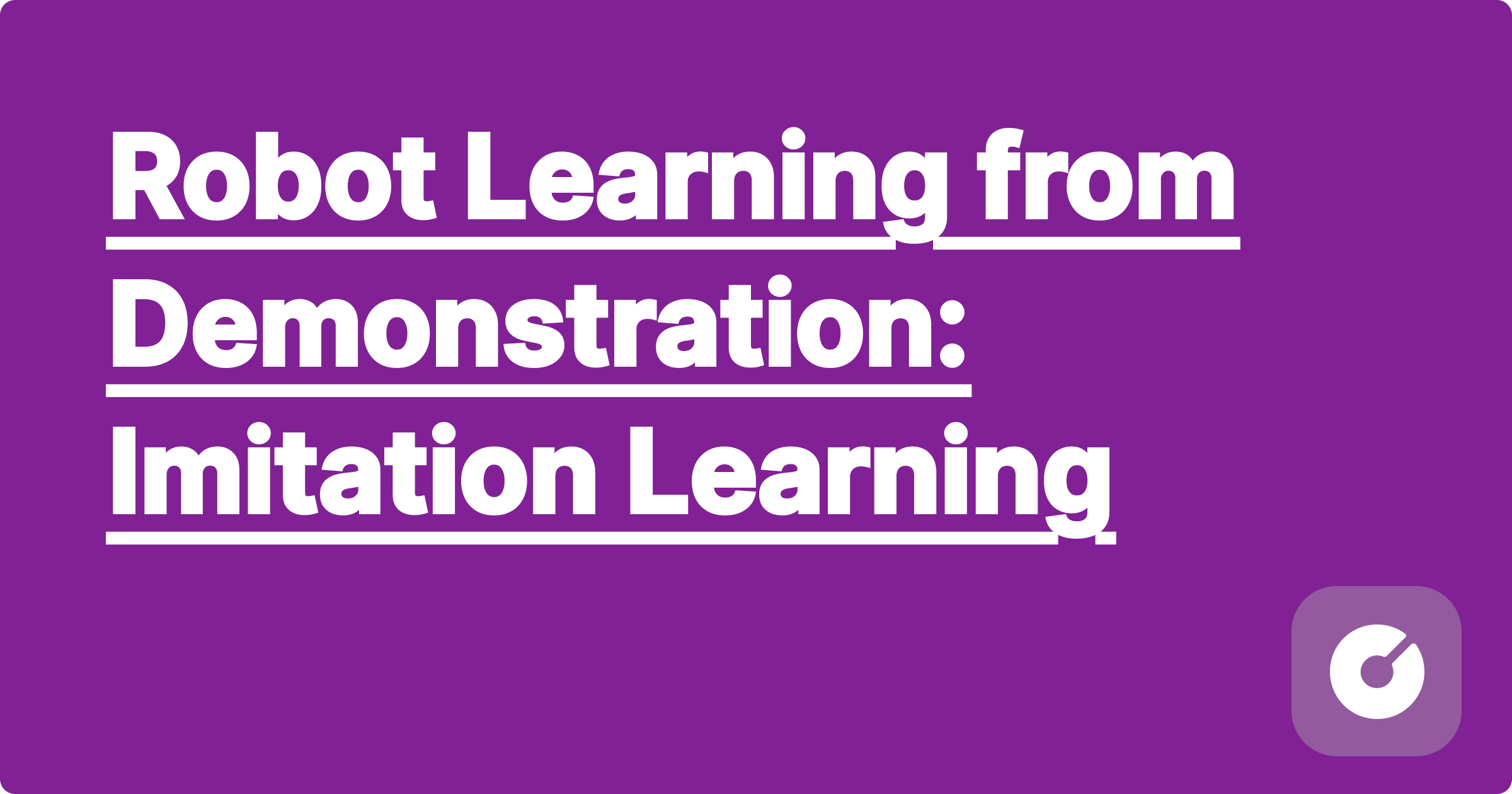
Robot Learning from Demonstration: Imitation Learning
pre {
background-color: #f4f4f4;
padding: 10px;
border-radius: 5px;
overflow-x: auto;
}
.equation {
background-color: #f9f9f9;
padding: 10px;
border-radius: 5px;
margin: 10px 0;
}
.tip {
background-color: #e0f7fa;
padding: 10px;
border-radius: 5px;
margin: 10px 0;
}
.warning {
background-color: #ffebee;
padding: 10px;
border-radius: 5px;
margin: 10px 0;
}
This blog post provides a comprehensive overview of imitation learning, a crucial area within robot learning. We'll delve into cutting-edge research, practical implementation details, and future directions, aiming to equip readers with the knowledge to immediately apply these techniques to their own research or projects.
Imitation learning, a subfield of machine learning, focuses on training robots to perform tasks by learning from expert demonstrations. This approach offers several advantages over traditional reinforcement learning methods: it avoids the need for extensive reward engineering, reduces sample complexity, and allows for leveraging human expertise directly. The rising interest in deploying robots in complex and unstructured environments necessitates efficient and robust learning paradigms, making imitation learning a highly relevant research area.
Behavioral cloning involves training a policy directly from expert demonstrations. A common approach uses supervised learning, where the expert's actions are mapped to the corresponding states. However, this suffers from the *covariate shift* problem – the distribution of states encountered during training differs from those during deployment.
# Simplified Behavioral Cloning using scikit-learn
from sklearn.linear_model import LinearRegression
model = LinearRegression()
model.fit(expert_states, expert_actions)
predicted_actions = model.predict(new_states)
IRL aims to infer the reward function that an expert implicitly follows. Once the reward function is learned, standard reinforcement learning algorithms can be used to train a policy. Recent advancements focus on improving efficiency and scalability using techniques like maximum entropy IRL and generative adversarial networks (GANs).
\begin{align} \label{eq:1}
\max_\theta \mathcal{L}(\theta) = \mathbb{E}_{s \sim p(s)} [\log p(a|s; \theta)] - \lambda \mathbb{H}[p(a|s; \theta)]
\end{align}
Equation (1) shows the objective function for maximum entropy IRL, where $\theta$ represents the policy parameters, $\lambda$ is the temperature parameter, and $\mathbb{H}$ is the entropy. This approach encourages exploration and helps avoid overfitting.
Dagger iteratively refines the learned policy by collecting new demonstrations from the learned policy in states where it's uncertain. This reduces the covariate shift problem significantly. Recent works explore using deep learning architectures for both policy learning and dataset aggregation.
# Dagger Algorithm (Simplified)
policy = initialize_policy()
dataset = expert_demonstrations
for i in range(iterations):
new_states = generate_states(policy)
expert_actions = get_expert_actions(new_states)
dataset = dataset + (new_states, expert_actions)
policy = train_policy(dataset)
Recent research heavily focuses on robust imitation learning from noisy, incomplete, or suboptimal demonstrations. This involves incorporating uncertainty estimations and error handling mechanisms. For example, methods based on Gaussian Processes and Bayesian Optimization are gaining traction for handling such uncertainty. Furthermore, the incorporation of meta-learning is proving effective in adapting quickly to new tasks based on limited demonstrations.
Several open-source libraries facilitate imitation learning research. Stable Baselines3, TensorFlow Agents, and PyTorch provide building blocks for creating and training policies. Robotics Simulation platforms like Gazebo and MuJoCo are essential for developing and testing algorithms.
Imitation learning finds applications in various industries:
Scaling imitation learning to complex tasks and high-dimensional state spaces requires addressing several challenges:
Breaking down complex tasks into simpler subtasks enables more efficient learning and better generalization. Hierarchical imitation learning methods decompose a task into a hierarchy of skills, allowing robots to learn and reuse skills more effectively.
Utilizing diverse data modalities, including visual and tactile information, can significantly improve the richness and robustness of learned policies. This requires advanced techniques for integrating heterogeneous data sources effectively.
Imitation learning inherits biases present in the expert demonstrations. This raises ethical concerns, particularly in applications with high societal impact. Methods for mitigating biases and ensuring fairness are crucial areas of ongoing research.
Imitation learning has emerged as a powerful technique for training robots. While challenges remain, ongoing research is continuously pushing the boundaries of its capabilities. By understanding the underlying principles, leveraging available tools, and considering the ethical implications, researchers and practitioners can unlock the immense potential of imitation learning for building intelligent and robust robots.
This blog post provides a high-level overview. For in-depth exploration, I recommend the following resources:
Second Career Medical Students: Changing Paths to a Rewarding Career
Foreign Medical Schools for US Students: A Comprehensive Guide for 2024 and Beyond
Osteopathic Medicine: Growing Acceptance and Benefits for Aspiring Physicians
Joint Degree Programs: MD/MBA, MD/JD, MD/MPH – Your Path to a Multifaceted Career in Medicine
Humanoid Robot Locomotion: Reinforcement Learning
Reinforcement Learning in Robotics: SAC and PPO
Reinforcement Learning in Robotics: SAC and PPO
Duke Machine Learning GPAI Demystified Neural Network Training | GPAI Student Interview
Duke Data Science Student GPAI Optimized My Learning Schedule | GPAI Student Interview